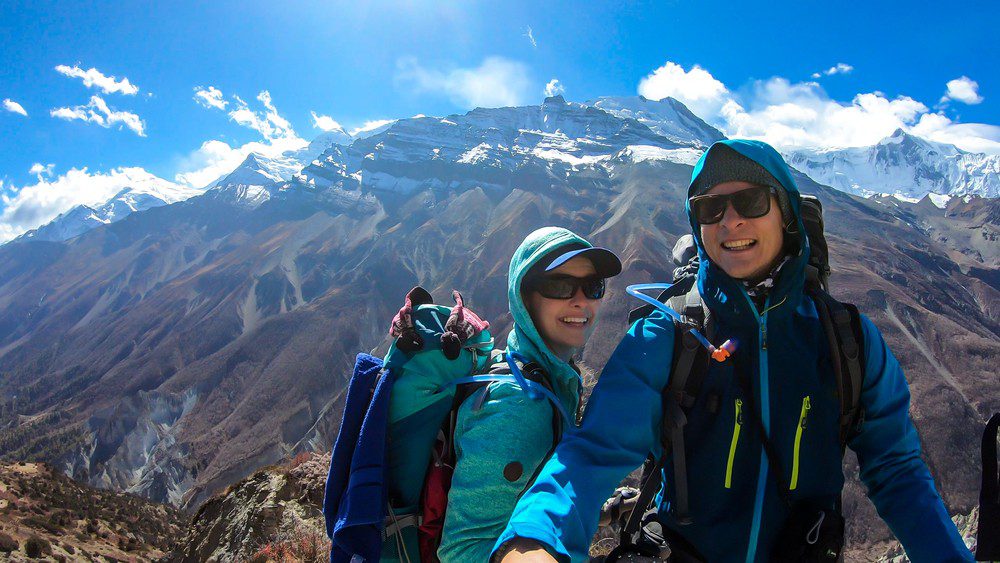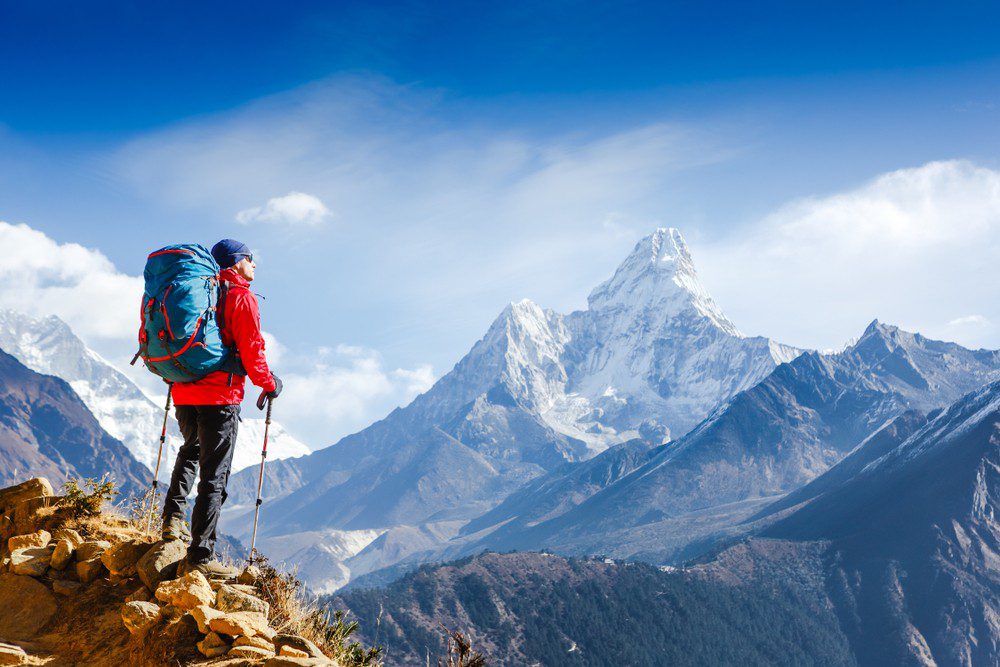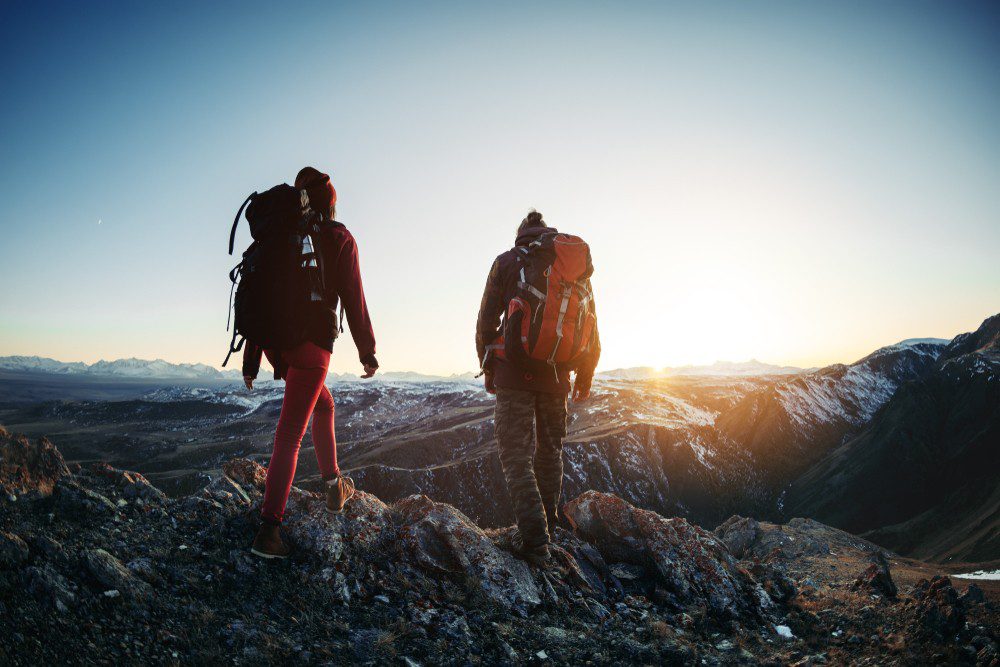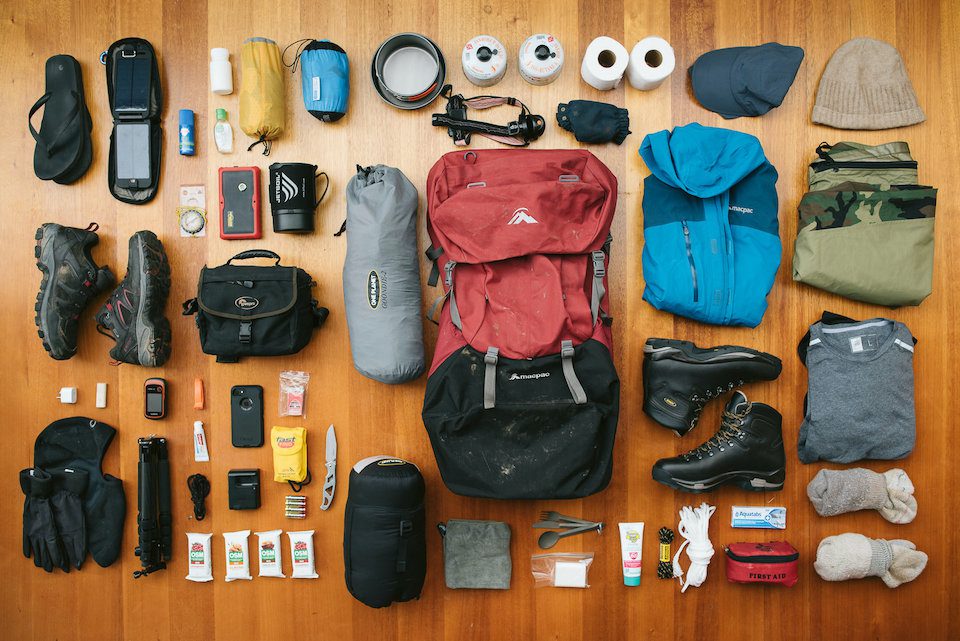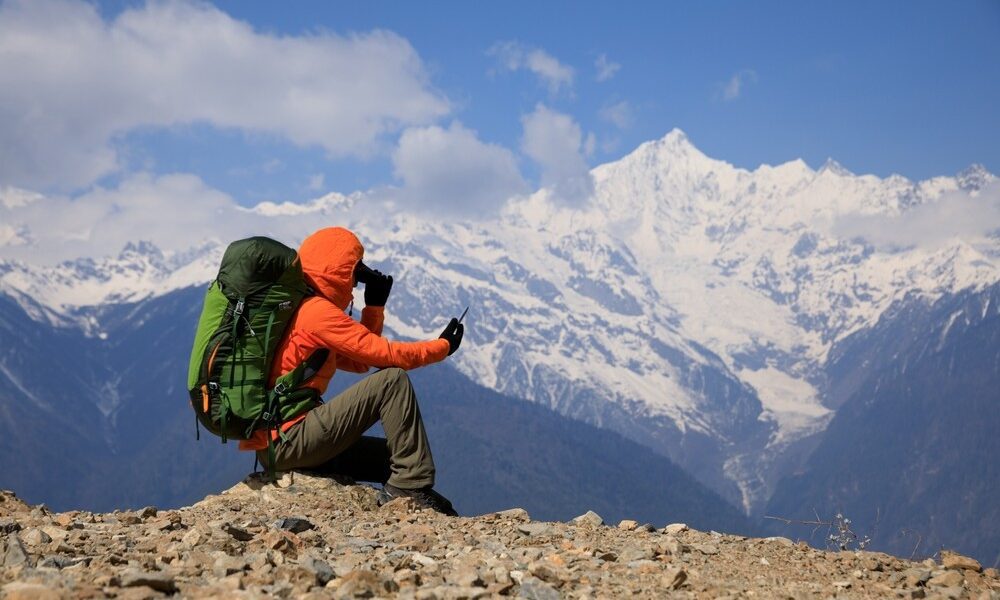Trekking in Ladakh is an unforgettable experience. With its breathtaking landscapes, high-altitude passes, and remote terrain, Ladakh offers some of the most challenging yet rewarding trekking adventures. However, when embarking on long-distance treks in Ladakh, packing light is crucial. Overpacking can quickly turn your adventure into a burden, while the right gear and packing strategies will make your trek more enjoyable, safe, and efficient. This guide will help you pack smart, so you can focus on the experience, not the weight on your back.
Understanding the Challenges of Trekking in Ladakh
Ladakh presents unique challenges for trekkers, primarily due to its high-altitude environment, rugged terrain, and unpredictable weather. If you don’t pack appropriately, these factors can make your trek far more difficult.
High-Altitude Trekking in Ladakh
Ladakh’s trekking routes often go above 4,000 meters (13,000 feet), and some passes exceed 5,000 meters (16,400 feet). At these elevations, the air is thinner, meaning your body must work harder to breathe. Therefore, carrying too much weight can exhaust you quicker, making lightweight packing essential.
“I learned the hard way during my first trek in Ladakh. I overpacked and struggled with the extra weight at high altitudes. On my next trek, I packed light, and it made all the difference!”
– Michael Davis, USA, Adventure Enthusiast
Remote and Rugged Terrain
Ladakh’s trails are often remote, rocky, and uneven. Lightweight gear will help you maintain balance and endurance. You might not have access to any shops or resupply points for days, so packing efficiently without leaving essentials behind is key.

How to Pack Light for Long Treks in Ladakh
The goal is to pack only the essentials while keeping your load as light as possible. Every piece of gear should serve a purpose, and you should prioritize multi-functional items. Below are strategies for packing efficiently for a long trek in Ladakh.
Choosing the Right Backpack
Your backpack is the foundation of your trekking setup. Choose a lightweight, durable, and comfortable pack with enough capacity for multi-day treks (typically between 40-55 liters). Make sure it has proper back support and adjustable straps for stability during long hikes.
Recommended Backpacks:
| Brand |
Model |
Weight |
Capacity |
Features |
| Osprey |
Exos 48 |
1.2 kg |
48 liters |
Ventilated back, multiple external pockets |
| Deuter |
Aircontact Lite 50+10 |
1.68 kg |
50 liters |
Adjustable harness, hydration system |
| Gregory |
Paragon 48 |
1.44 kg |
48 liters |
Rain cover, adjustable torso length |
“The Osprey Exos 48 was perfect for my 10-day trek in Ladakh. It was light enough to not strain my back but still had enough room for all my essentials.”
– Sarah Thompson, UK, Travel Blogger
The Importance of Layered Clothing
Packing lightweight, layered clothing is essential for Ladakh’s ever-changing weather. Mornings and evenings can be freezing, while afternoons might feel warm. Layering allows you to adjust to these shifts without overpacking.
Recommended Clothing:
- Base Layer: Moisture-wicking and quick-drying fabric to keep sweat off your skin.
- Mid Layer: Insulating layer (such as fleece or down) for warmth.
- Outer Layer: Lightweight, waterproof, and windproof jacket to protect you from the elements.
“I packed just three layers – a base, mid, and outer shell – and it was perfect for the fluctuating temperatures on the trek. Plus, it saved space in my pack.”
– Amit Sharma, India, IT Consultant
Footwear for Long Treks
The right footwear can make or break your trekking experience. Choose lightweight yet sturdy trekking boots with ankle support and a waterproof membrane for Ladakh’s varied terrain. A good pair of trekking boots ensures you have enough traction on rocky surfaces and protection from water during river crossings.
Trekking Poles are also recommended for steep ascents and descents, as they help reduce strain on your knees and improve balance.

Essential Gear for Trekking in Ladakh
When it comes to long treks, each piece of gear should be carefully considered. Here’s a list of essential gear to include while keeping your pack light.
Lightweight Sleeping Bags and Shelter
For cold nights at high altitudes, a lightweight down sleeping bag rated for temperatures as low as -10°C (14°F) is essential. A lightweight tent or tarp should also be compact and weather-resistant.
Recommended Sleeping Bags:
| Brand |
Model |
Weight |
Temperature Rating |
| Mountain Hardwear |
Phantom 15 |
0.9 kg |
-9°C (15°F) |
| Therm-a-Rest |
Hyperion 20 |
0.57 kg |
-6°C (20°F) |
Portable Cooking and Hydration Solutions
For multi-day treks, you’ll need a lightweight stove for cooking, preferably one that runs on easily available fuel like canisters. Pack collapsible cookware and a lightweight pot. Water filtration is essential, as you’ll need to purify water from streams and rivers along the way.
Recommended Gear:
- Stove: MSR PocketRocket 2 (73g)
- Water Filter: Sawyer Mini Filter (57g)
“My MSR PocketRocket 2 was a lifesaver. It’s ultra-light and fits easily into my pack, and I used it every evening to cook quick meals.”
– Jenny Carter, Australia, Outdoor Instructor
Packing a First Aid Kit and Safety Equipment
A first aid kit is non-negotiable. Keep it compact but stocked with essentials such as bandages, antiseptic wipes, painkillers, and blister treatment. Don’t forget safety equipment such as a headlamp, a multi-tool, and a lightweight emergency blanket.

Safety Gear:
- Headlamp: Black Diamond Spot 350 (86g)
- Multi-tool: Leatherman Squirt PS4 (56g)
Avoiding Overpacking: What You Don’t Need
It’s easy to overpack, but here are items you can do without on a long trek.
Streamlining Personal Items and Toiletries
Avoid full-size toiletries and opt for travel-size or eco-friendly alternatives. Items such as biodegradable soap, a small towel, and a toothbrush should be enough.
How to Pack for Changing Weather Conditions
For changing weather, pack lightweight rain gear that can be compressed and stored. You can skip heavy jackets in favor of layered clothing systems, which are more versatile and easier to manage.
Trekking Nutrition: Packing Lightweight Food
Keeping your energy up during a long trek is critical, but food can be bulky. Focus on packing lightweight, calorie-dense foods that provide sustained energy.
Best Snacks for High-Energy on the Go
Pack foods like nuts, energy bars, trail mix, and dried fruits. Freeze-dried meals are lightweight, nutritious, and only require boiling water to prepare.
“I packed freeze-dried meals and energy bars for my 8-day trek, and they were easy to carry and cook. Plus, they didn’t weigh down my backpack.”
– Liam Haines, New Zealand, Photographer
Packing Light While Staying Sustainable
It’s important to stay mindful of the environment while trekking in Ladakh. Packing light often aligns with sustainable trekking practices.
Eco-Friendly Gear Choices
Opt for gear made from sustainable materials and choose reusable items like water bottles and food containers. Solar-powered chargers are a great way to keep your devices charged without relying on disposable batteries.

Final Checklist for Packing Light on Long Treks in Ladakh
Here’s a simple checklist to help you pack light without leaving anything important behind:
| Category |
Item |
| Backpack |
Lightweight 40-55L backpack |
| Clothing |
Layered clothing, waterproof jacket |
| Footwear |
Waterproof trekking boots, trekking poles |
| Sleeping Gear |
Lightweight sleeping bag, compact tent |
| Cooking Gear |
Portable stove, collapsible cookware |
| Safety |
First aid kit, headlamp, multi-tool |
| Hydration |
Water filter, collapsible water bottle |
| Food |
Freeze-dried meals, energy bars |
Q&A Section
What should I pack for a week-long trek in Ladakh?
You should pack a lightweight backpack, layered clothing, a compact sleeping bag, and essentials like a stove and water filter. Refer to the gear checklist for more details.
How do I prepare for high-altitude treks in Ladakh?
It’s essential to acclimatize before starting your trek. Spend a few days at moderate altitudes and stay hydrated. Packing light will also help conserve energy.
What is the best time of year for trekking in Ladakh?
The best time for trekking in Ladakh is from June to September, when the weather is more stable. However, pack for cold temperatures, especially at night.
How can I avoid overpacking for a trek?
Avoid overpacking by prioritizing multi-functional items, packing layered clothing, and choosing compact versions of essentials. Stick to a gear checklist to stay organized.
Can I rent trekking gear in Ladakh?
Yes, there are rental shops in Leh where you can rent trekking gear, such as backpacks, sleeping bags, and trekking poles. However, it’s recommended to bring your own for comfort and reliability.
What food should I carry for long treks in Ladakh?
Carry calorie-dense, lightweight food like freeze-dried meals, energy bars, nuts, and trail mix. These provide high energy without taking up much space or weight.
How to Pack Light for Long Treks in Ladakh
How to Pack Light for Long Treks in Ladakh | The journey through Ladakh mirrors the very essence of unraveling unknown horizons, as its dramatic landscapes and unique cultural identity awaken the deepest sense of wonder and exploration. How to Pack Light for Long Treks in Ladakhdelves into this realm where inner peace intertwines with the wild, untouched beauty of Ladakh. From the snow-capped peaks to the serene monasteries, every step in Ladakh is a step toward self-discovery. The mountains, ancient paths, and unspoken mysteries stretch before travelers, offering a meditative experience where each encounter feels both effortless and transformative. Whether it’s trekking across remote valleys or sitting quietly beside a sacred lake, Ladakh invites those who seek a deeper connection to the natural and spiritual world.

The How to Pack Light for Long Treks in Ladakh’s How to Pack Light for Long Treks in Ladakh
The monasteries of Ladakh stand as living monuments to the region’s profound spiritual heritage. With origins dating back over a thousand years, these ancient structures are both places of worship and repositories of art, culture, and wisdom. Hemis Monastery, one of the largest in Ladakh, is renowned for its annual festival, featuring colorful mask dances performed by monks. The history of these monasteries reflects Ladakh’s role as a crossroads between India, Tibet, and Central Asia, where religious and cultural influences have intertwined over the centuries.
The Tibetan Buddhist influence is especially evident in the architecture and daily life of the monks. Prayer wheels, intricate murals, and the soft hum of chants fill the air as visitors explore the monastery grounds. Each monastery, from the remote Lamayuru to the awe-inspiring Thiksey, offers a window into the spiritual heart of Ladakh. These centers of meditation, learning, and community life continue to thrive, preserving traditions that have shaped Ladakh for generations.
Why Visit Ladakh for How to Pack Light for Long Treks in Ladakh?
Ladakh is a destination that transcends mere travel. It offers a journey that touches both the outer and inner landscapes, making it a perfect setting for those who seek to unravel their own unknown horizons. The region’s breathtaking scenery—from towering mountain ranges to hidden valleys—provides not just an escape but a space for contemplation and growth. Ladakh’s culture, deeply rooted in Buddhist practices, invites visitors to reflect on their own lives and the world around them.
Ladakh’s people, known for their warmth and hospitality, add to the richness of the experience. Villages like Sumda Chun and the legendary Nubra Valley introduce travelers to a way of life that is intricately connected to nature and spirituality. Staying in local homestays allows for immersive experiences where one can learn about traditional Ladakhi customs, share meals made from local produce, and participate in community rituals.

Beyond its natural beauty, Ladakh offers a unique opportunity to explore oneself. The vastness of the region’s plateaus and the clarity of its skies seem to mirror the vastness of the human spirit. Whether it’s standing atop a mountain pass at 18,000 feet or meditating in a centuries-old monastery, Ladakh helps unravel the unknown horizons within each traveler.
Finding the Best How to Pack Light for Long Treks in Ladakh in Ladakh
Finding the best places in Ladakh to experience “How to Pack Light for Long Treks in Ladakh” involves venturing off the beaten path. Ladakh’s lesser-known treks, such as those leading to secluded monasteries or high-altitude lakes, offer unparalleled opportunities for solitude and reflection. The Markha Valley trek, for instance, takes travelers through verdant valleys, ancient villages, and high-altitude passes, allowing for both physical and spiritual exploration.
Ladakh’s iconic lakes, including Pangong Tso and Tso Moriri, are ideal spots for quiet contemplation. Their still waters reflect the sky, creating a mesmerizing landscape that feels timeless and infinite. Sitting beside these lakes, especially at dawn or dusk, brings an overwhelming sense of peace and connection with nature.

For those interested in Ladakh’s spiritual heritage, exploring monasteries such as Alchi, Phyang, or Diskit can be a transformative experience. These sites are not just places of worship but also centers of art, philosophy, and wisdom. Visiting these monasteries, with their ancient murals and intricate statues, offers insight into Ladakh’s rich cultural tapestry.
Ladakh’s Atmosphere and How to Pack Light for Long Treks in Ladakh
Ladakh’s atmosphere is unlike any other place on Earth. The stark contrasts between the rugged mountains and the serene, tranquil monasteries create an environment that feels both raw and sacred. The traditional decor in Ladakhi homes and religious sites reflects this balance, with mud-brick houses adorned with prayer flags and colorful thangkas (Buddhist paintings) that add warmth and spiritual meaning to the space.

The interiors of Ladakhi homes, often simple and functional, are filled with symbols of devotion. Small shrines dedicated to Buddhist deities are common, and the air is often fragrant with incense. The use of earthy materials, like stone and wood, along with brightly colored textiles, creates an inviting and peaceful space, perfect for relaxation and reflection.
Traditional Ladakhi Cuisine
Traditional Ladakhi cuisine is an integral part of the region’s identity, offering a unique blend of flavors that reflect its harsh climate and remote location. Hearty, warming dishes such as thukpa (noodle soup) and momos (dumplings) provide the sustenance needed to endure Ladakh’s cold temperatures. Skyu, a thick stew made with root vegetables and barley, is another staple of the Ladakhi diet, designed to nourish both body and spirit.

Drinks like butter tea, made with yak butter and salt, are a must-try for anyone visiting Ladakh. This rich, savory drink is not only warming but also hydrating, making it essential for those venturing into the high-altitude regions of Ladakh. Chang, a local barley beer, is often enjoyed during festivals and community gatherings, adding a sense of joy and camaraderie to any occasion.
Live Cultural How to Pack Light for Long Treks in Ladakh in Ladakh
Ladakh is home to a vibrant cultural scene, with festivals and live performances held throughout the year. The Hemis Festival, which celebrates the birth of Guru Padmasambhava, is one of the largest and most famous events in the region. Monks dressed in elaborate costumes perform cham dances, which depict the triumph of good over evil. The energy of the festival, with its bright colors, rhythmic music, and elaborate rituals, draws visitors from around the world.
Other local festivals, such as the Losar (New Year) and Ladakh Festival, provide visitors with the chance to witness traditional dance, music, and crafts that have been passed down through generations. These events are more than just entertainment; they are a celebration of Ladakh’s rich cultural heritage and its deep connection to the spiritual world.
Trekking and Outdoor Activities How to Pack Light for Long Treks in Ladakh
Ladakh is a trekker’s paradise, offering some of the most stunning and challenging routes in the world. From the famous How to Pack Light for Long Treks in Ladakh, which follows the frozen Zanskar River, to lesser-known routes like the Sham Valley or Nubra Valley treks, Ladakh’s landscape offers endless possibilities for adventure and discovery. The high-altitude passes, such as Khardung La and Chang La, offer breathtaking views of snow-capped peaks and sprawling valleys.

Wildlife enthusiasts will also find How to Pack Light for Long Treks in Ladakh to be a haven for rare species such as the snow leopard, Himalayan blue sheep, and the Tibetan wild ass. Winter expeditions to spot the elusive snow leopard in the Hemis National Park are gaining popularity among wildlife photographers and conservationists alike.
The Importance of Preserving Ladakh’s How to Pack Light for Long Treks in Ladakh
Ladakh’s rich cultural and environmental How to Pack Light for Long Treks in Ladakh is under increasing threat from climate change and mass tourism. Preserving this unique region requires careful attention to sustainable tourism practices. Choosing eco-friendly accommodations, supporting local businesses, and participating in community-led conservation efforts are just a few ways that visitors can contribute to the preservation of Ladakh’s natural and cultural heritage.
Ladakh’s people have a long history of living in harmony with their environment, practicing sustainable agriculture, and maintaining a deep spiritual connection to the land. Visitors are encouraged to follow the same principles, leaving no trace and respecting the fragile ecosystems that make Ladakh so special.
Etiquette and Tips for Visiting How to Pack Light for Long Treks in Ladakh
Before visiting Ladakh, it’s essential to understand and respect the region’s customs and traditions. As a deeply spiritual place, Ladakh requires visitors to dress modestly, especially when visiting monasteries or attending religious ceremonies. Always ask for permission before taking photographs inside monasteries or of local people.
Medical How to Pack Light for Long Treks in Ladakh
Spa trail How to Pack Light for Long Treks in Ladakh
How to Pack Light for Long Treks in Ladakh

When How to Pack Light for Long Treks in Ladakh, remember to stay on designated paths to avoid damaging fragile ecosystems. Tipping is appreciated but not expected in most settings, and it’s important to carry cash, as many remote areas do not accept credit cards. Lastly, be mindful of altitude sickness and take the necessary precautions when traveling to higher elevations.
Conclusion: Enjoying How to Pack Light for Long Treks in Ladakh in Ladakh
Ladakh is a place where the physical and spiritual worlds converge, offering travelers a journey unlike any other. Whether you’re trekking across high-altitude deserts, exploring ancient monasteries, or simply sitting in quiet reflection by a mountain lake, Ladakh invites you to unravel your own unknown horizons. By respecting the region’s traditions and practicing sustainable tourism, you help ensure that Ladakh’s beauty and cultural richness will be preserved for future generations to explore and enjoy.
